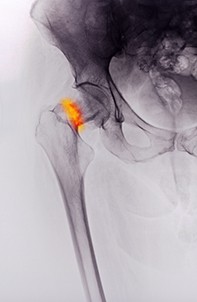Peer Reviewed
Case studies
An older woman on bisphosphonate therapy who continues to fracture
Abstract
Antiosteoporotic therapies reduce fracture rates but do not eliminate fractures completely. A proportion of patients will continue to fracture despite adequate osteoprotective medications, counselling and support. There are multiple factors that contribute to recurrent fractures and careful evaluation is required.
Key Points
- Antiosteoporotic therapies reduce fracture rates but do not eliminate fractures completely.
- Beyond the severity of osteoporosis and previous history of fragility fractures, there are multiple other factors that may contribute to recurrent fractures while taking treatment. These include poor therapeutic adherence, suboptimal calcium and vitamin D intake, lifestyle factors such as smoking and excess alcohol consumption, frequent falls and secondary causes of osteoporosis.
- The management of osteoporosis begins by recognition of risk factors and appropriate screening.
- Patients with severe osteoporosis should be considered for more active antiosteoporotic therapies.
Purchase the PDF version of this article
Already a subscriber? Login here.

